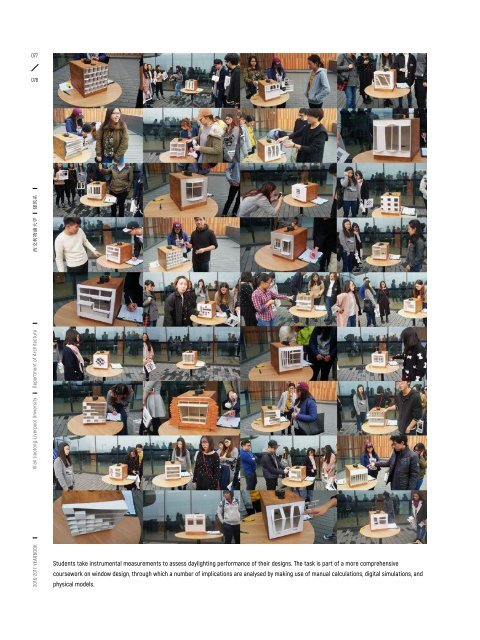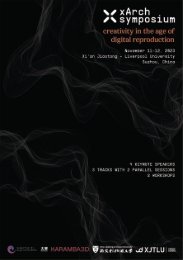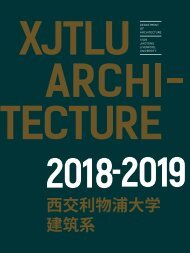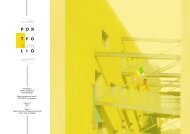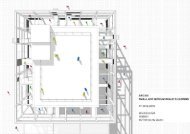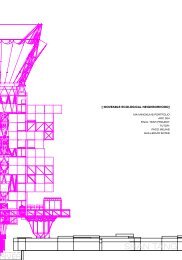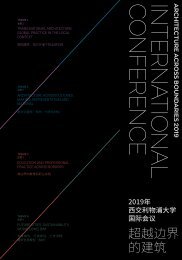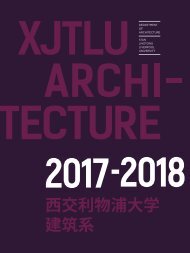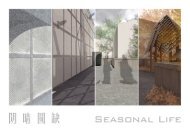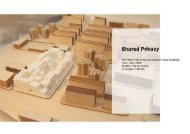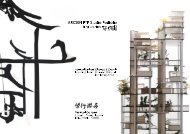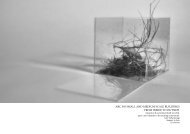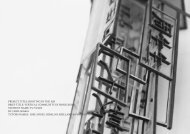YEARBOOK 2016 - 2017 | XJTLU DEPARTMENT OF ARCHITECTURE
The fourth edition of the yearbook of the Department of Architecture at Xi'an Jiaotong-Liverpool University presents student works created during the academic year 2016 - 2017. The yearbook exemplifies the new model for Chinese architectural education for which the department was commended by the Royal Institute of British Architects (RIBA). It is thus also a showcase of the creative culture that has guided our students in taking first steps to successful international careers as responsible and creative architectural designers. XJTLU offers RIBA Part 1, 2 and 3.
The fourth edition of the yearbook of the Department of Architecture at Xi'an Jiaotong-Liverpool University presents student works created during the academic year 2016 - 2017. The yearbook exemplifies the new model for Chinese architectural education for which the department was commended by the Royal Institute of British Architects (RIBA). It is thus also a showcase of the creative culture that has guided our students in taking first steps to successful international careers as responsible and creative architectural designers. XJTLU offers RIBA Part 1, 2 and 3.
You also want an ePaper? Increase the reach of your titles
YUMPU automatically turns print PDFs into web optimized ePapers that Google loves.
077<br />
078<br />
ARC201<br />
Environmental Design and<br />
Sustainability<br />
<strong>2016</strong>-<strong>2017</strong> <strong>YEARBOOK</strong> Xi’an Jiaotong-Liverpool University Department of Architecture 西 交 利 物 浦 大 学 建 筑 系<br />
Students take instrumental measurements to assess daylighting performance of their designs. The task is part of a more comprehensive<br />
coursework on window design, through which a number of implications are analysed by making use of manual calculations, digital simulations, and<br />
physical models.<br />
Level 2<br />
( Year 3 | Semester 1 )<br />
Module Credits<br />
5<br />
Module Leader<br />
Marco Cimillo<br />
Number of Students<br />
43<br />
We spend up to 90% of our time indoor and our comfort, health,<br />
productivity and well-being are heavily affected by the environmental<br />
conditions inside buildings. At the same time buildings are major<br />
consumers of energy and natural resources and among the main<br />
responsible for greenhouse gases emissions. The way they are designed<br />
and built is therefore key to sustainable development, especially in a fast<br />
urbanising country as today’s China.<br />
Since two thirds of the final energy performance of a building depend<br />
on basic architectural decisions, such as building form, orientation and<br />
percentage of glass, awareness and competence on these issues are an<br />
essential part of the skill set of a contemporary designer.<br />
ARC201 addresses environmental quality, energy efficiency and<br />
sustainability in architecture. The topics cover a general introduction<br />
to the environmental and climate issues and how they affect and are<br />
affected by the built environment, in addition to human comfort and<br />
energy efficiency in buildings.<br />
Students learn theories and methods to understand, design and assess<br />
daylighting, natural ventilation, passive heating and cooling, as well as to<br />
develop strategies for building services and integrated renewable energy<br />
production. Sustainability is also studied from a wider perspective,<br />
giving consideration to the entire life cycle of buildings and to the<br />
international assessment methods.<br />
Level 02 – Year 3<br />
B Eng Architecture Programme


